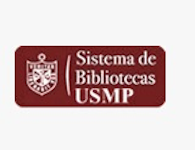| dc.contributor.author | Méndez‐López, María R. | |
| dc.contributor.author | Attoui, Houssam | |
| dc.contributor.author | Florin, David | |
| dc.contributor.author | Calisher, Charles H. | |
| dc.contributor.author | Florian-Carrillo, J. Christian | |
| dc.contributor.author | Montero, Stephanie | |
| dc.date.accessioned | 2020-06-04T14:38:02Z | |
| dc.date.available | 2020-06-04T14:38:02Z | |
| dc.date.issued | 2015-11-27 | |
| dc.identifier.citation | Méndez MR., Attoui H., Florin D., Calisher CH., Florian JC., Montero S. Association of vectors and environmental conditions during the emergence of Peruvian horse sickness orbivirus and Yunnan orbivirus in northern Peru. J Vector Ecol. 2015; 40(2): 355‐363. | es_PE |
| dc.identifier.uri | https://hdl.handle.net/20.500.12727/6143 | |
| dc.description.abstract | Since 1983, cases of diseased donkeys and horses with symptoms similar to those produced by alphaviruses were identified in two departments in northern Peru; however serological testing ruled out the presence of those viruses and attempts to isolate an agent were also unproductive. In 1997, also in northern Peru, two new orbiviruses were discovered, each recognized as a causative agent of neurological diseases in livestock and domestic animals and, at the same time, mosquitoes were found to be infected with these viruses. Peruvian horse sickness virus (PHSV) was isolated from pools of culicid mosquitoes, Aedes serratus and Psorophora ferox , and Yunnan virus (YUOV) was isolated from Aedes scapularis in the subtropical jungle (upper jungle) located on the slope between the east side of the Andes and the Amazonian basin in the Department of San Martín. Both viruses later were recovered from mosquitoes collected above the slope between the west side of the Andes and the coast (Department of Piura) in humid subtropical areas associated with the Piura River basin. In this region, PHSV was isolated from Anopheles albimanus and YUOV was isolated from Ae. scapularis . We discuss the ecology of vector mosquitoes during the outbreaks in the areas where these mosquitoes were found. | es_PE |
| dc.description.sponsorship | Facultad de Medicina de la Universidad San Martín de Porres (USMP) Lima-Perú, proyecto E100012010042. | es_PE |
| dc.format.extent | pp. 355-363 | es_PE |
| dc.language.iso | eng | es_PE |
| dc.publisher | Society for Vector Ecology | es_PE |
| dc.relation.ispartof | urn:issn:1948-7134 | |
| dc.relation.ispartofseries | Journal of Vector Ecology;vol. 40, no. 2 | |
| dc.relation.uri | https://doi.org/10.1111/jvec.12174 | es_PE |
| dc.rights | info:eu-repo/semantics/openAccess | es_PE |
| dc.rights.uri | https://creativecommons.org/licenses/by-nc-nd/4.0/ | es_PE |
| dc.source | Repositorio Académico USMP | es_PE |
| dc.source | Universidad San Martín de Porres - USMP | es_PE |
| dc.subject | Orbivirus | es_PE |
| dc.subject | Aedes | es_PE |
| dc.subject | Culicidae | es_PE |
| dc.subject | Virus de insectos | es_PE |
| dc.subject | Infecciones por reoviridae | es_PE |
| dc.subject | Animales | es_PE |
| dc.subject | Perú | es_PE |
| dc.title | Association of vectors and environmental conditions during the emergence of Peruvian horse sickness orbivirus and Yunnan orbivirus in northern Peru | |
| dc.type | info:eu-repo/semantics/article | es_PE |
| thesis.degree.name | Medicina Humana | es_PE |
| thesis.degree.grantor | Universidad de San Martín de Porres. Facultad de Medicina Humana | es_PE |
| thesis.degree.discipline | Medicina | es_PE |
| dc.subject.ocde | https://purl.org/pe-repo/ocde/ford#3.02.00 | es_PE |








